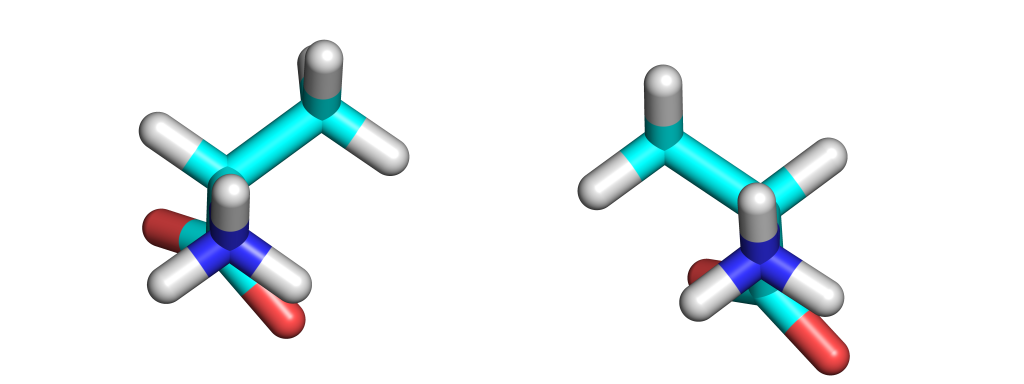Each of the canonical amino acids, except glycine has a chiral center on at least its alpha carbon. A chiral center is an atom bound to four unique substituents. Each amino acid except glycine therefore has at least two stereoisomers, with the most common pair of enantiomers known as the L- and D-enantiomers (note that threonine and isoleucine also have chiral centers on their side-chains, resulting in the existence of another pair of enantiomers for these amino acids).

Figure 1: (left) L-alanine, view down N-C-alpha bond. (right) D-alanine, view down N-C-alpha bond. The three distinct substituents of the alpha carbon (hydrogen, methyl group, and carboxyl group) have a different absolute configuration about the chiral center. Structures built using software from reference [1].
I think this is a really interesting question, and I’m looking forward to learning more about it. It may be nice to add a little bit more background before jumping straight into the question.
Also the information at the bottom about chiral centers is important, but feels kind of random. Maybe include that in some of the background given before stating your question.
As Katherine said, this is, indeed, an interesting question. However, there is no background that leads up to the question. Why should we care about D-peptides? You answer this background in the answer section, so I feel it could be useful to transfer some of that information to this section in order to provide necessary context of the question. Any way to contextualize this question would greatly help the presentation of this question so the readers can ground this question in a neat application.
I like the inclusion of the L and D alanine structure because it adds a colorful, attractive visual to reel in the reader. I also agree that the discussion of chiral centers seems to detract from natural flow. It might work better if that description (should you choose to keep it) goes in the figure caption.
The top paragraph is fine, but I feel like you can expand the bottom paragraph to give a better overview of chirality and why it’s important in drugs and biochemistry in general. Maybe mention how they can be separated via their boiling points and how enzyme active sites are specific to one enatiomer, or that some enzymes are incredibly stereospecific in their catalyzed reactions. You mention some of this later, but moving that information to the front page of the website minimizes the chance of a reader being confused throughout the rest of the website.